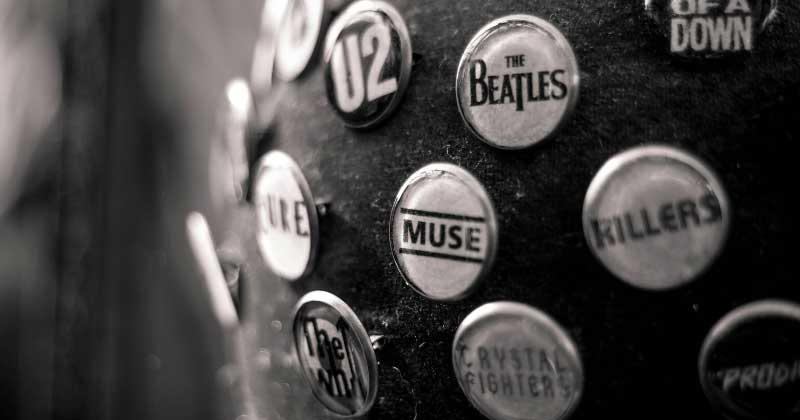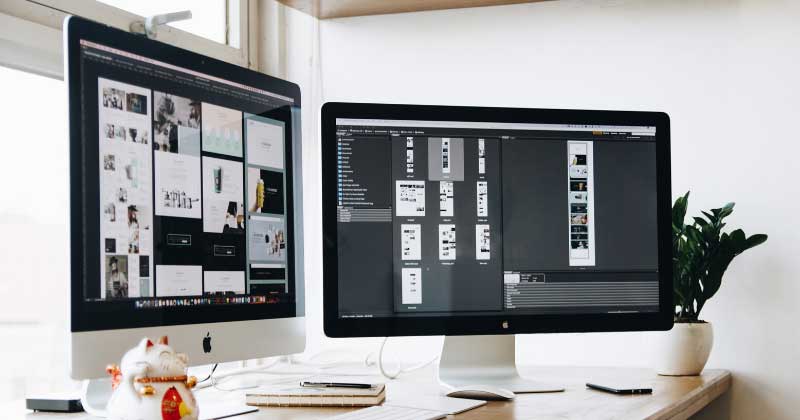
Type That! Typography in Your Graphics
Whether or not you’re paying attention, you’ve most likely encountered typography in your daily life. It’s present on the label of your processed food, on the sides of public transportation vehicles, on billboards and posters and what-have-you. Typography is everywhere!
But what is it?
Typography, according to Google, is “the art or procedure of arranging type or processing data and printing from it”. Essentially, typography is what happens when you arrange letters in an aesthetically pleasing arrangement.
There are eight elements to keep in mind when it comes to typography, and you’ve probably heard or read about a few of them. Let’s break them down!
TYPEFACE (AND FONTS)
Typeface is what you call a family of fonts, and are categorized into three types: serif (with “legs”), sans-serif (without “legs”), and decorative (self-explanatory). For example, Helvetica is a typeface, and the fonts under the Helvetica family include Helvetica Light, Helvetica Light Oblique, Helvetica Roman, and Helvetica Black.
In simple terms, a font is a specific variation of a style of lettering, while a typeface is a group of lettering variations that are unified by an overarching style.
HIERARCHY
Hierarchy is somewhat self-explanatory in typography: it’s the order in which letters, words, or lines are emphasized to direct the viewer’s eye.
Take a peep at the front page of a hard copy print newspaper; the main story’s headline takes up a considerable amount of space, with the letters being huge and attention-grabbing. The secondary stories’ headlines have smaller letters compared to the main headline, and the rest of the text on the front page are in small uniform letters. This is a standard example of hierarchy in typography.
Hierarchy is also important in conveying the information we want viewers to focus on. If you’ve noticed on posters, certain words are emphasized more than others – on an advertising poster, for example, the word SALE and the date and location of the sale would often grab your attention first. This is because those are the bits of information that the marketing team wants you to focus on first.
Hierarchy is also useful in creating website layouts, as they communicate information in an orderly way. In fact, on this very page, you’ll notice typography hierarchy in play with the title, section headers, and text bodies. Cool, right?
CONTRAST
Contrast is a little tricky to explain, because it involves the application of various visual techniques like mixing colors, typefaces, and font sizes. In a nutshell, though, contrast in typography is putting two elements against each other in a complementary way that is visually pleasing while still being balanced and not overwhelming to the viewer.
CONSISTENCY
Consistency is an underappreciated aspect of typography – if you’ve seen a store poster or web advertisement that made you wince from all the clashing fonts, you’ll understand why it’s important. Not only is inconsistent typography unpleasant to look at, it can lead to your message not being communicated correctly, such as when letters stick together and form entirely new letters, or when lines of text overlap and become unintelligible.
ALIGNMENT
Alignment dictates how your text is oriented – popular options include left alignment, right alignment, center alignment, and justified alignment. Alignment isn’t just strictly about horizontal arrangement, however; you can align text vertically, diagonally, or not at all (the “float” effect, to be used sparingly and carefully). Alignment can control how your text is read, so be mindful with how you align your text!
WHITE SPACE
White space is pretty self-explanatory as well: it’s the amount of “blank” or “empty” space in a document or image where the eyes can rest. White space is often utilized to allow text to “breathe”, as it were; an overcrowded page or poster can make the viewer feel overwhelmed, leading to them avoiding the page or poster – bad news for any marketer!
Effective typography knows when to let its elements breathe, giving the viewer space to properly absorb the visual effect and information of the design.
COLOR
There are three aspects to color that many people tend to gloss over when it comes to design in general: hue, which is the shade of color; saturation, which is the brilliance (or lack thereof) of the color; and value, which is the lightness or darkness of the color. These three aspects are important, because color combinations can be a struggle and a half with design. Yes, that neon shade of pink is trendy and popular, but is pairing it with a dull mossy green really the best idea?
You don’t have to study color theory in great detail, but some familiarity with basic color rules can help – in fact, you can even find your own way of breaking said rules to work to your advantage!
Typography is an excellent tool in any digital marketing toolkit. We hope that this article has helped in demystifying the process, and we hope you try it out soon!
Good luck!




